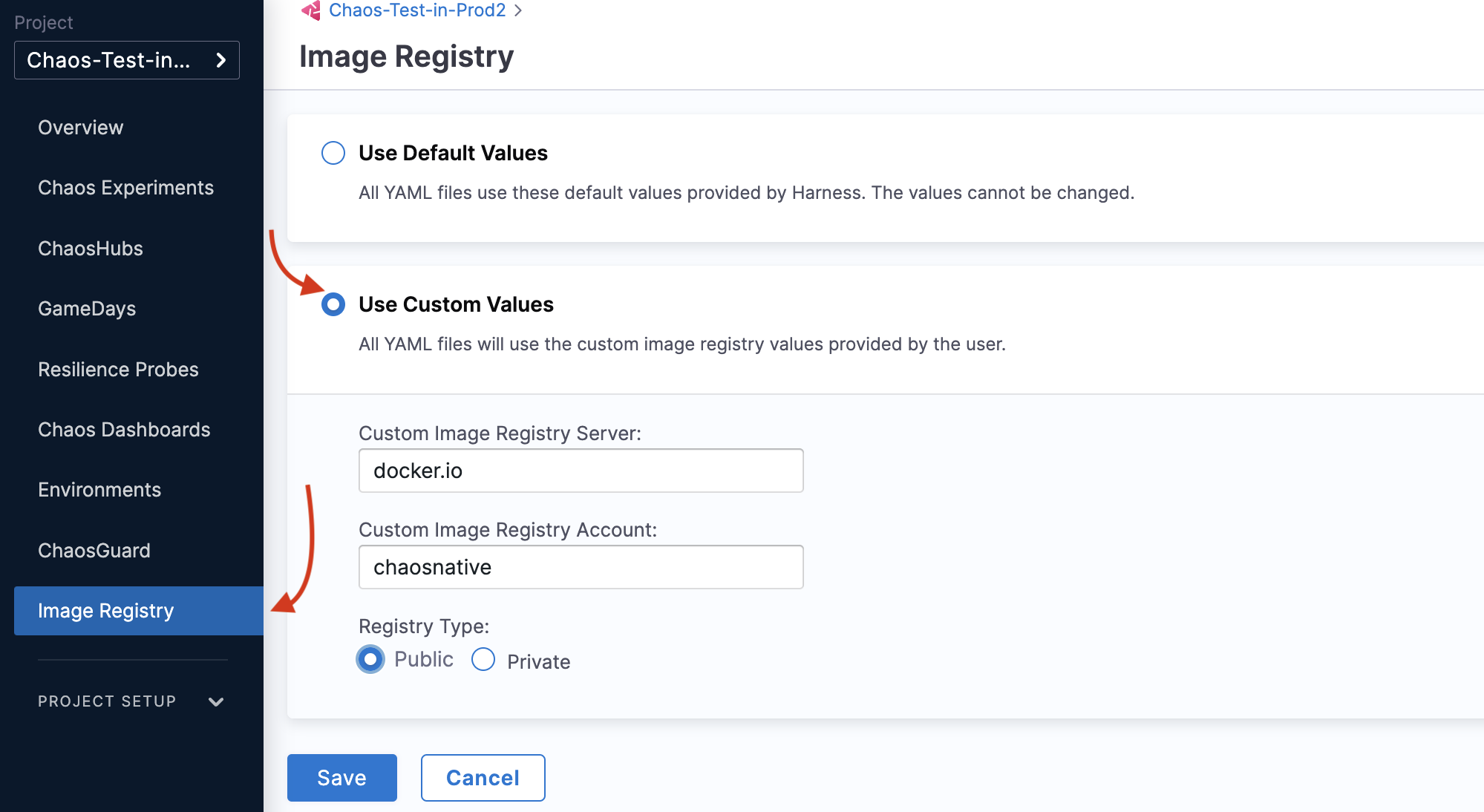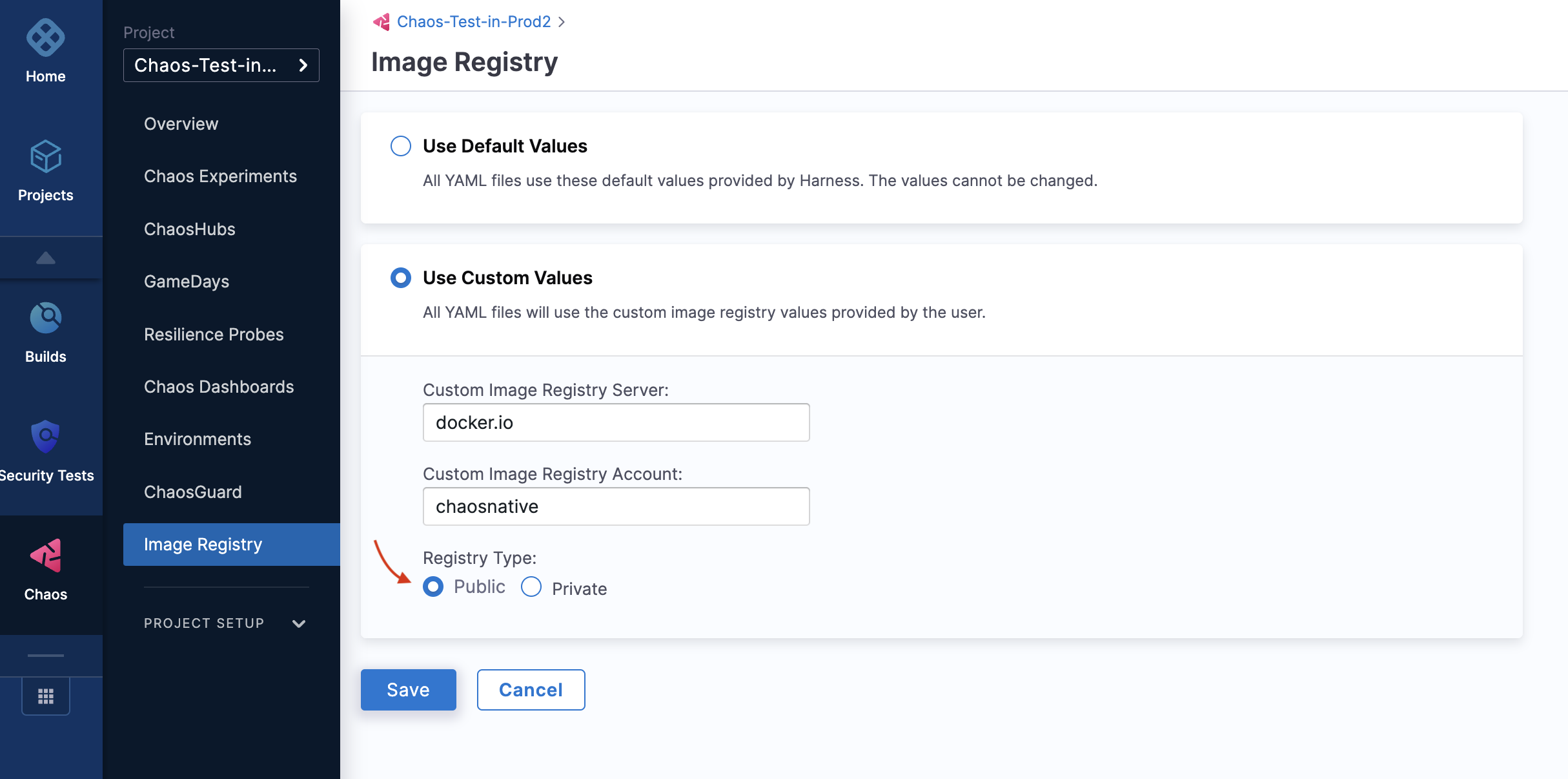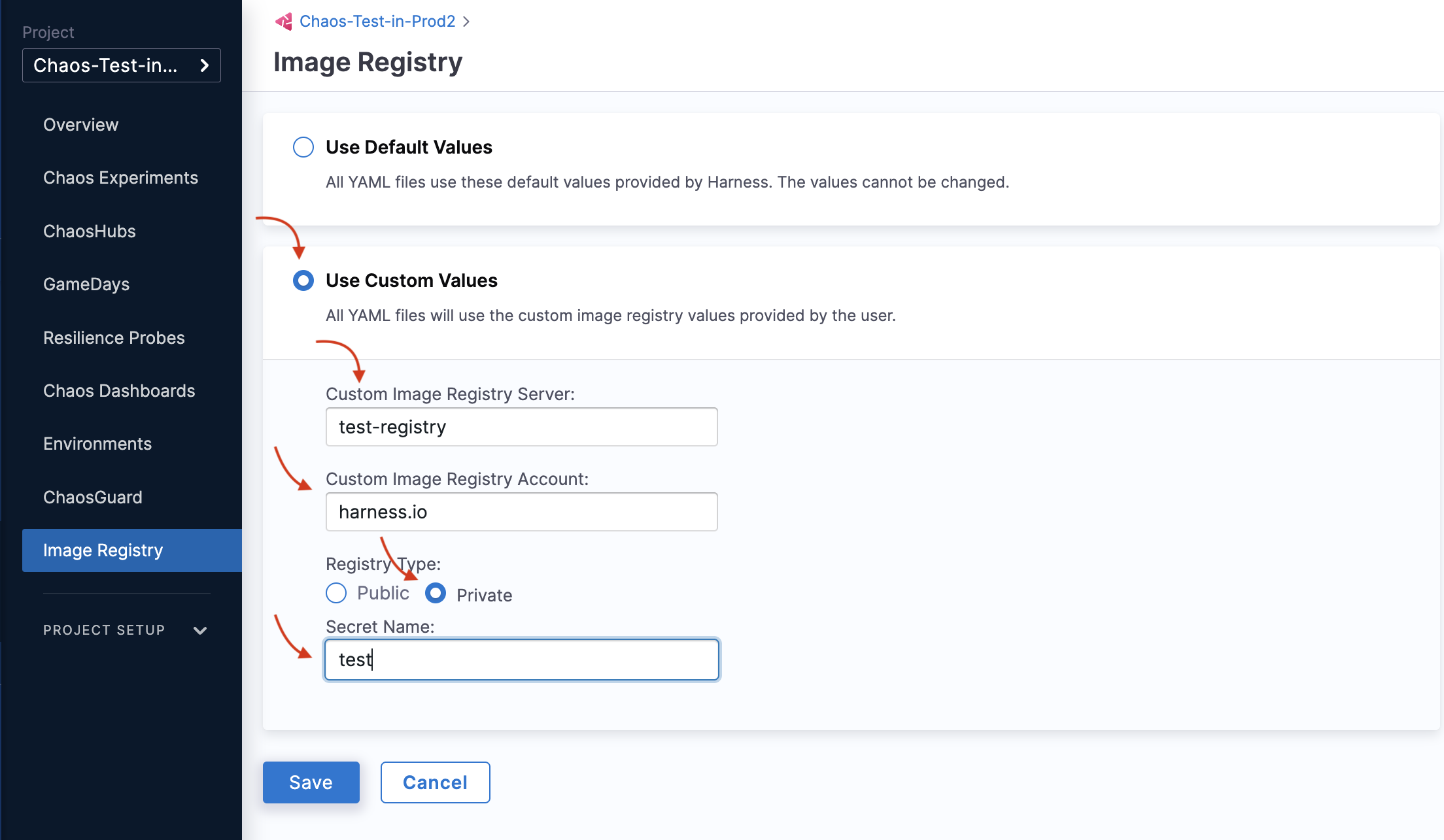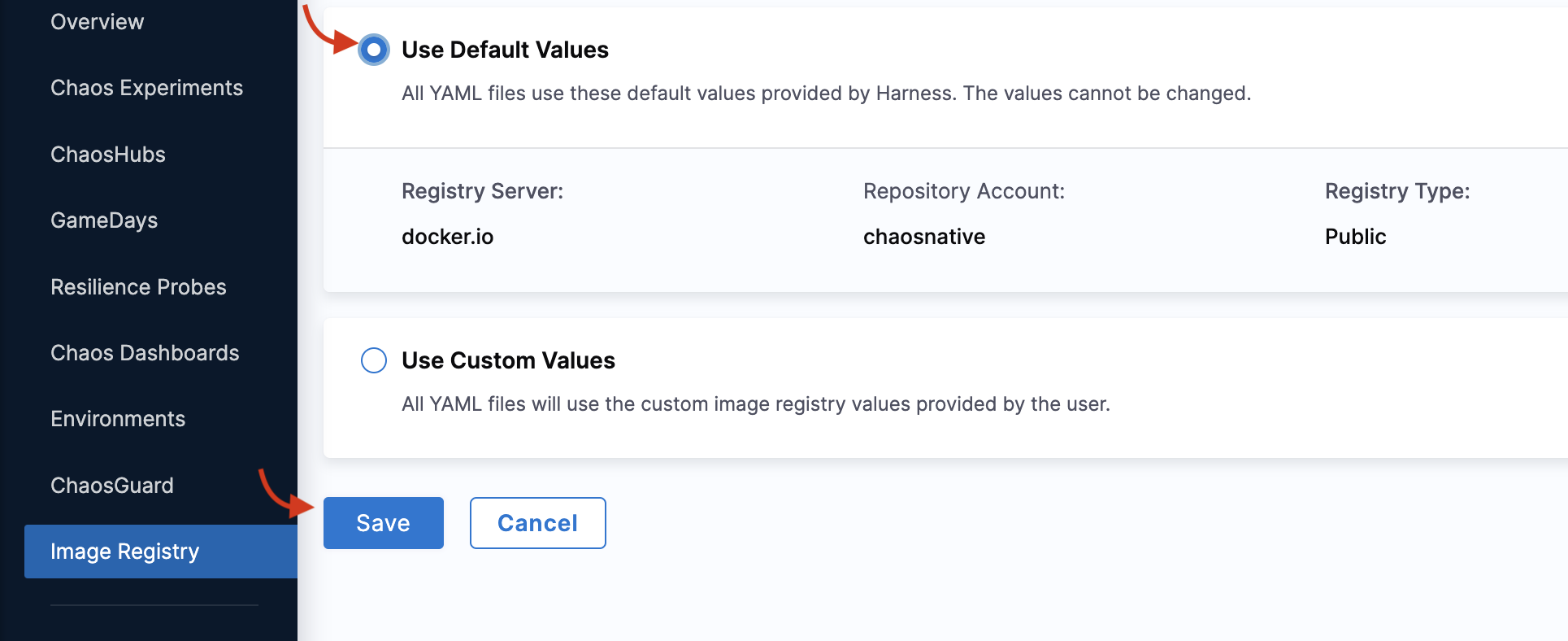Image registry
This section describes how you can use an image registry within a chaos experiment.
Image registry is a repository that hosts container images which are used by chaos experiments. Registries can be public or private. HCE allows you to use custom image registries for chaos experiments.
- You can configure the image registry to be used with the default probes. If you haven't configured a probe yet, the experiment will use the default image registry.
- HCE doesn't provide image registry support at the moment for default probes.
Follow the steps mentioned below to use default or custom values of the image registry in your chaos experiment.
- Custom values
- Default values
Custom image registry
Step 1: Navigate to Image Registry
-
To use a custom image, go to Image Registry on the left-hand side, and select Use custom values.

Step 2: Specify parameters
-
Specify parameters for the custom values, such as Custom image registry server, Custom image registry account, and Registry type.

-
You can choose between Public or Private in the Registry type. When you select Private registry type, add the secret name.

Step 3: Save the custom values
- Click Save to save your changes.
In your chaos experiment manifest, the above custom setting will be reflected as shown below.
container:
name: ""
image: docker.io/chaosnative/k8s:1.30.0
imagePullSecrets:
- name: defreg
command:
- sh
- "-c"
args:
- kubectl apply -f /tmp/ -n {{workflow.parameters.adminModeNamespace}} && sleep 30
- If you use a public image or provide the
imagePullSecretwhile using a private registry, the Argo workflow controller (v3.4.x) finds the entry point for litmus-checker. - If you use an image from an internal registry without providing
imagePullSecret, the workflow facilitates a default command that you can use to determine the entry point of litmus-checker.
Default image registry
Step 1: Navigate to Image Registry
-
To use a default image, select Use default values, and then click Save.

In your chaos experiment manifest, the above default setting is reflected as shown below.
container:
name: ""
image: docker.io/chaosnative/k8s:1.30.0
command:
- sh
- "-c"
args:
- kubectl apply -f /tmp/ -n {{workflow.parameters.adminModeNamespace}} && sleep 30